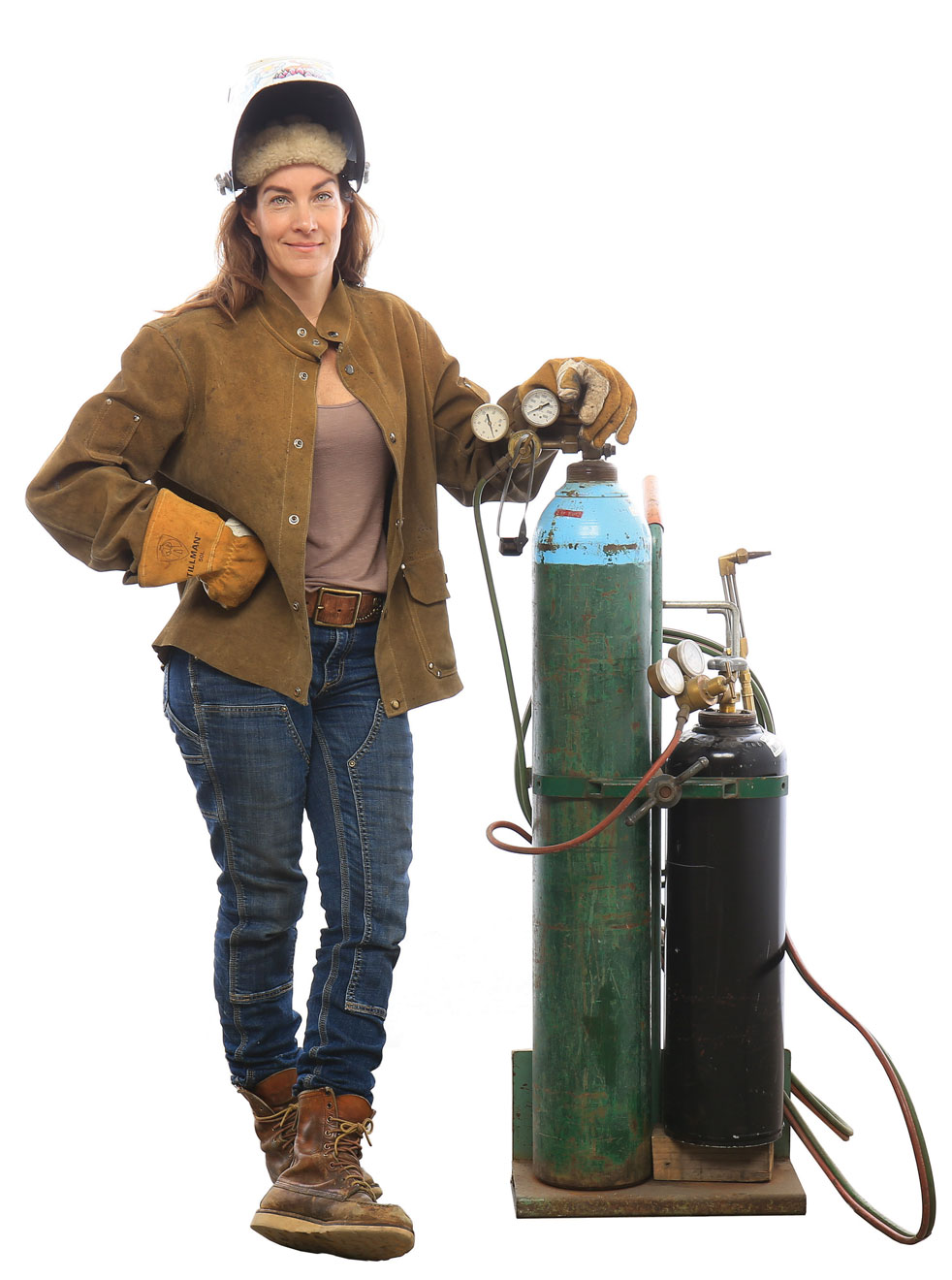
Some call Diana Coopersmith a modern-day Rosie the Riveter. But this 49-year-old Novato resident with 25 years of steelwork experience under her leather belt is also a member of Ironworkers Local Union 377, runs the custom metal fabrication company DC Metalwork, and teaches in youth programs at three Bay Area schools. Coopersmith is one of only four women to have done ironwork on the Golden Gate Bridge. In short, she’s more than a throwback to a World War II image — she’s the living, breathing, hammering, sparks-a-flying real deal.
1. Who first taught you to weld?
In 1992 while attending the San Francisco Art Institute, I met local artist Mark Pauline and his group called Survival Research Laboratories. This group of artists came together as experts in their fields to build radiocontrolled robots. Mark taught me basic metalworking skills and how to use the tools in his shop. I was hooked immediately. After working with SRL, I was hired by the Ironworkers union, where at that time we had 10 women compared to 3,000 men in our Local 377.
2. Why ironwork?
Working with metal is something that is very different than with any other kind of building material. There is an uncompromising strength and integrity in the material and in the people of this trade. Also, working with metal is very grounding and soothing for me. When I’m under a welding hood, watching sparks fly, it’s almost like sitting in front of a campfire.
3. What did you do on the Golden Gate Bridge?
The ironworkers have many responsibilities on the bridge. They don’t just maintain and fix the bridge, they do everything from putting up all the painters’ scaffolding to talking jumpers off the railing who are thinking about jumping. Working on the bridge was one of the most life-changing experiences of my life. Every day was filled with breathtaking views but also challenges both mentally and physically; it was like walking on clouds with butterflies in my stomach.
4. Scariest moment on a job?
I’ve had a few but I would say working on the retrofit project for San Francisco City Hall in the 75-foot-high dome. It was my first union job and I was still getting comfortable in very high places on scaffolding.
5. What is it about teaching kids to weld that excites you?
Watching kids cut and weld metal and immerse themselves in an industrial creative experience is amazing. It takes time for some to overcome the fear of working with sparks, smoke and heat. And some kids need to overcome a lot more: for example, I taught autistic kids who had sensory issues and needed to overcome the heavy leather jacket, wearing welding hoods that leave them in the dark sometimes, but mostly the loud noises from metal banging. After these amazing kids overcame these fears they were so excited they didn’t want to leave the class.
6. A Bay Area building that you want to work on?
Salesforce in San Francisco. Working on the tallest building in S.F. would be very exciting.
7. Is it difficult being a woman in a male-dominated industry?
I know that more women are getting into this work now than ever before. I think in the past women were not comfortable putting themselves in a position where they would be treated badly and not taken seriously. Yes, it is extremely physically challenging but nothing a woman can’t handle. You do need very thick skin and to be willing to work harder than all of your male co-workers to be respected and considered part of the team or someone they can rely on to get the job done right.
8. Favorite Marin place for inspiration?
Spirit Rock. I love to go with my family and solo. It’s so peaceful.
This article originally appeared in Marin Magazine’s May 2018 print edition under the headline: “Metalworker Diana Coopersmith Answers 8 Questions.”

Kier Holmes is a native, Marin-based landscape designer who works at M2 Design and Construction, for over 15 years, has artfully designed and created sustainable gardens that are dynamic year round. She also writes for Gardenista, is an elementary school garden educator, a garden speaker for adults and leader of the Garden Club for kids at the Mill Valley Library. Holmes readily admits that she is a nerd about all things plant related, and can geek out on a dinner-plate dahlia like nobody’s business. Her natural habitat is among flowers and her hands are almost always dirty.
